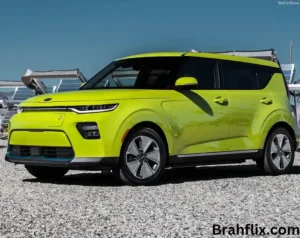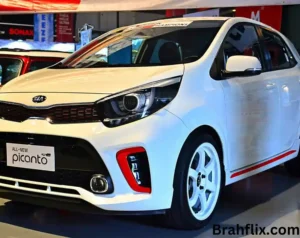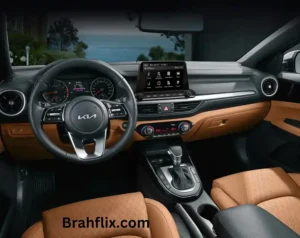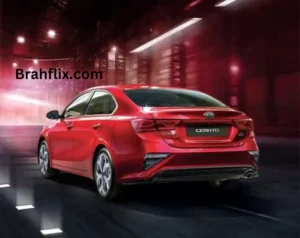Introduction
Who makes KIA automobiles? This is a question that piques the interest of car enthusiasts and everyday consumers alike. KIA Motors, a South Korean automotive manufacturer, has become a household name known for its affordable yet stylish vehicles. But what lies beneath the surface of this globally recognized brand? In this article, we’ll delve into the origins of KIA, explore its journey to becoming a major player in the automotive industry, and uncover the innovative practices that keep it at the forefront of car manufacturing.
Key Takeaways
- KIA Motors Corporation is a South Korean automaker known for producing a wide range of vehicles.
- The company is a subsidiary of Hyundai Motor Group, which significantly influences its design and technology.
- KIA’s history dates back to 1944, with its initial focus on manufacturing bicycles and motorcycles.
- Over the years, KIA has gained a reputation for its affordable pricing and stylish design.
- KIA places a strong emphasis on sustainability and innovation, investing in electric vehicles (EVs) and other eco-friendly technologies.
- The brand has a global presence, with manufacturing facilities in multiple countries.
The Origins of KIA Motors
KIA Motors Corporation, headquartered in Seoul, South Korea, was established in December 1944 as Kyungsung Precision Industry, a manufacturer of steel tubing and bicycle parts. The company produced Korea’s first domestic bicycle, the Samchully, in 1951. The name “KIA” was adopted in 1952, representing the company’s desire to “rise from Asia.”
Evolution from Bicycles to Automobiles
In the 1960s, KIA expanded its production line to include motorcycles, trucks, and cars. By 1973, KIA had built the Sohari Plant, Korea’s first integrated automotive manufacturing facility. This marked the beginning of KIA’s journey into the automobile industry.
- Bicycles and Motorcycles: Initially, KIA focused on two-wheelers, which were highly popular in post-war Korea.
- Truck Production: The company transitioned to producing light trucks to meet the growing demands of the industrial sector.
- Passenger Vehicles: KIA introduced its first passenger car, the Brisa, in 1974.
Key Milestones
- 1973: KIA’s Sohari Plant opens.
- 1974: Launch of the Brisa, KIA’s first passenger car.
- 1986: Partnership with Ford Motor Company begins.
- 1998: KIA becomes a subsidiary of Hyundai Motor Group.
KIA’s transition from bicycles to automobiles highlights its adaptability and commitment to growth. The company’s journey is a testament to its ability to navigate challenges and seize opportunities in the ever-evolving automotive landscape.
KIA’s Relationship with Hyundai
KIA Motors is part of the Hyundai Motor Group, the third-largest vehicle manufacturer globally as of 2023. This relationship has been pivotal in KIA’s development and expansion.
The Acquisition and Its Impact
In 1998, during the Asian financial crisis, Hyundai Motor Company acquired a 51% stake in KIA Motors. This acquisition allowed KIA to leverage Hyundai’s resources and expertise, significantly enhancing its production capabilities and market reach.

- Design and Technology Sharing: KIA benefits from Hyundai’s technological advancements and design innovations.
- Shared Platforms: Many KIA models share platforms and components with Hyundai vehicles, optimizing production costs and efficiency.
Independent Branding
Despite the close relationship, KIA maintains its distinct brand identity. The company emphasizes youthful, dynamic designs and affordability, appealing to a different demographic than Hyundai.
- Design Philosophy: KIA focuses on bold, sporty aesthetics that resonate with younger consumers.
- Brand Strategy: KIA’s marketing emphasizes innovation and value for money, differentiating it from its parent company.
The synergy between KIA and Hyundai allows both brands to thrive in the competitive automotive market while maintaining their unique identities.
Global Expansion and Market Presence
KIA’s global expansion strategy has been instrumental in establishing its presence in key international markets. The company’s commitment to quality and innovation has earned it a loyal customer base worldwide.
Manufacturing Facilities
KIA operates manufacturing plants in several countries, ensuring efficient production and distribution across regions. Key facilities include:
- South Korea: The Sohari, Hwasung, and Gwangju plants serve as the primary manufacturing hubs.
- United States: The West Point, Georgia plant produces popular models like the Sorento and Telluride.
- Slovakia: The Žilina plant caters to the European market, producing models like the Ceed and Sportage.
Global Sales Performance
KIA’s focus on delivering high-quality vehicles at competitive prices has resulted in impressive sales figures globally. In 2023, KIA sold over 2.5 million vehicles, marking a significant increase from previous years.
- Top Markets: KIA’s largest markets include the United States, Europe, and China.
- Popular Models: The KIA Seltos, Sportage, and Telluride are among the best-selling models worldwide.
KIA’s global presence reflects its ability to adapt to diverse market needs while maintaining a consistent focus on innovation and quality.
Innovative Design and Technology
KIA’s commitment to innovation is evident in its approach to design and technology. The company invests heavily in research and development to create vehicles that are not only aesthetically appealing but also technologically advanced.
Design Philosophy
KIA’s design philosophy, “Opposites United,” emphasizes the harmony between contrasting elements. This approach is reflected in the bold, dynamic designs that characterize KIA vehicles.
- Tiger Nose Grille: A signature design element that gives KIA cars a distinctive, recognizable look.
- Dynamic Lines and Shapes: KIA’s designs feature sleek, modern aesthetics that appeal to a broad audience.
Technological Advancements
KIA integrates cutting-edge technology into its vehicles, enhancing the driving experience and ensuring safety and convenience.
- Infotainment Systems: KIA’s UVO Connect system offers seamless connectivity, navigation, and entertainment options.
- Advanced Driver-Assistance Systems (ADAS): Features like lane-keeping assist, blind-spot monitoring, and adaptive cruise control enhance safety and convenience.
KIA’s emphasis on design and technology positions it as a leader in the automotive industry, offering vehicles that cater to the evolving needs of consumers.
KIA’s Commitment to Sustainability
As environmental concerns become increasingly important, KIA is committed to reducing its carbon footprint and promoting sustainability. The company is investing in eco-friendly technologies and practices to create a more sustainable future.
Electric and Hybrid Vehicles
KIA is at the forefront of the electric vehicle (EV) revolution, offering a range of electric and hybrid models that combine performance with environmental responsibility.
- KIA EV6: The company’s flagship electric vehicle, known for its impressive range and innovative features.
- Hybrid Models: KIA offers hybrid versions of popular models like the Niro and Sorento, providing consumers with eco-friendly options.
Sustainable Manufacturing Practices
KIA is implementing sustainable practices across its manufacturing facilities to minimize environmental impact.
- Energy Efficiency: KIA’s plants are equipped with energy-efficient technologies to reduce emissions and conserve resources.
- Waste Reduction: The company emphasizes recycling and waste reduction to minimize its environmental footprint.
KIA’s commitment to sustainability reflects its dedication to creating a positive impact on the environment and society as a whole.
Customer-Centric Approach
KIA’s success is largely attributed to its customer-centric approach, which prioritizes the needs and preferences of its consumers. The company focuses on delivering exceptional value and an unparalleled ownership experience.
Quality Assurance and Reliability
KIA is renowned for its commitment to quality, offering vehicles that are reliable and durable. The company’s rigorous testing and quality control processes ensure that each vehicle meets high standards of performance and safety.
- Industry Recognition: KIA consistently ranks high in quality and reliability surveys conducted by organizations like J.D. Power.
- Warranty Coverage: KIA offers a 10-year/100,000-mile powertrain warranty, providing peace of mind to consumers.
Customer Support and Satisfaction
KIA prioritizes customer satisfaction by offering comprehensive support services and resources.
- After-Sales Service: KIA provides exceptional after-sales service through its extensive network of dealerships and service centers.
- Customer Feedback: The company values customer feedback and uses it to improve products and services continually.
KIA’s customer-centric approach has earned it a loyal customer base and a reputation for delivering exceptional value and quality.
KIA’s Future Prospects and Challenges
As KIA continues to evolve and expand, it faces both opportunities and challenges in the ever-changing automotive landscape.
Opportunities
KIA’s focus on innovation and sustainability positions it well to capitalize on emerging trends in the automotive industry.
- Electric and Autonomous Vehicles: KIA is investing in electric and autonomous vehicle technologies to meet the growing demand for eco-friendly and connected cars.
- Global Expansion: KIA is exploring new markets and expanding its global presence to reach a wider audience.
Challenges
KIA must navigate several challenges to maintain its competitive edge and achieve long-term success.
- Intense Competition: The automotive industry is highly competitive, with established players and new entrants vying for market share.
- Regulatory Compliance: KIA must adhere to stringent environmental and safety regulations across different markets.

KIA’s ability to adapt to changing market dynamics and address these challenges will determine its future success.
FAQs
What is the relationship between KIA and Hyundai?
KIA Motors is a subsidiary of Hyundai Motor Group. This relationship allows KIA to leverage Hyundai’s resources and expertise while maintaining its distinct brand identity.
How does KIA ensure the quality of its vehicles?
KIA is committed to quality and reliability through rigorous testing and quality control processes. The company consistently ranks high in industry quality and reliability surveys.
What makes KIA’s design unique?
KIA’s design philosophy, “Opposites United,” emphasizes the harmony between contrasting elements. The brand is known for its bold, dynamic designs and signature elements like the tiger nose grille.
What is KIA doing to promote sustainability?
KIA is committed to sustainability by investing in electric and hybrid vehicles and implementing eco-friendly manufacturing practices. The company aims to reduce its carbon footprint and promote environmental responsibility.
How does KIA prioritize customer satisfaction?
KIA prioritizes customer satisfaction by offering quality products, comprehensive support services, and an exceptional ownership experience. The company values customer feedback and continually strives to improve its offerings.
Conclusion
Who makes KIA automobiles? KIA Motors Corporation, a subsidiary of Hyundai Motor Group, is the driving force behind the brand’s success. With a rich history, a commitment to innovation and sustainability, and a customer-centric approach, KIA has become a leading player in the automotive industry.
As KIA continues to evolve and expand, it faces both opportunities and challenges in the ever-changing automotive landscape. The company’s focus on electric and autonomous vehicles, global expansion, and sustainability positions it well for future success.
Engage with Us
What do you think makes KIA stand out in the automotive industry? Are you a KIA owner or considering purchasing one? Share your thoughts and experiences with us in the comments below!
If you’re interested in learning more about the automotive industry and other exciting topics, explore our other blog posts for more insights and information.

